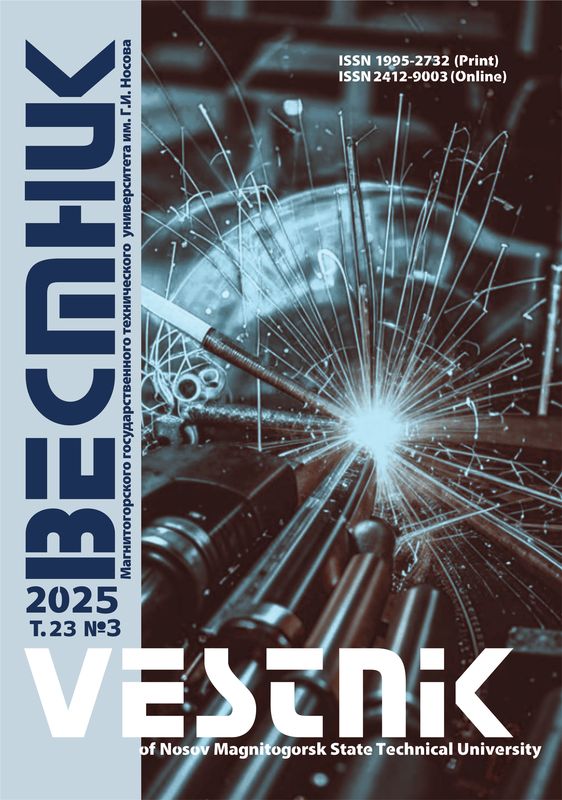Abstract
This work is an experimental study into a surface plastic deformation technique using a punching block.
Various severe plastic deformation techniques can be used for surface nanostructuring, including an impact surface plastic deformation (SPD) technique. Coining is one of the SPD techniques, which involves a tool per-forming a reciprocating relative motion. There are vari-ous devices used for surface cold working of large plates and round parts. They are usually complex in design and rather bulky. The use of an electric hand puncher seems to be a good option in the case of surface cold working. The rated number of impacts is 4,000 spm, the impact energy is 3.5 J, the rated speed of the spindle is 700 rpm. A spike pointed chisel made of high carbon alloy steel and a 10 mm drill bit with a hard tip were used for sur-face working of the templates. The puncher can be oper-ated in two modes: impact or impact with torsion. Both modes were used when working with the chisel. The test showed that the use of a puncher even with the low im-pact energy of 3.5 J can be quite effective in strengthen-ing the surface layer. Maximum hardening of steel 20 reached 83%, and the depth of the hardened layer was 350 µm. A fiber structure is created in the surface layer with a fiber thickness of 0.13 to 0.23 µm, accompanied with fragmentation processes. A surface layer with the above fragment sizes is similar to a nanostructured layer which is created through severe plastic deformation. In the impact-with-torsion mode the resulting fragment size is smaller than in the case of pure impact action, which indicates a more severe plastic deformation in the first instance. The most severe hardening in terms of actual hardness, the depth of the hardened layer and microstructural refinement are achieved through deformation with a hard tipped punching block. The deformation techniques involving punching blocks can be applied for the strengthening of astragal moldings, keyslots, welds, as well as for cold working with corrugation and other operations. The surface cold working technique considered offers a specific technology, and its practical application would require some R&D continuation.
Keywords
Surface cold working, electric puncher, punching block, impact, cold-work strengthening, nanostructuring.
1. Lyakishev N.P., Alymov M.I. Structural nanomaterials. Rossiiskie tekhnologii [Russian technologies]. 2006, vol. 1-2, pp. 71-81.
2. Makarov A.V., Korshunov L.G. Strength and wear resistance of nanocrystalline structured friction surfaces of martensitic steels. Izv. VUZov. Fizika [Proceedings of Russian Universities. Physics]. 2004, no. 8, pp. 65-80.
3. Chukin M.V., Korchunov A.G., Golubchik E.M., Polyakova M.A., Gulin A.E. Vestnik Magnitogorskogo Gosudarstvennogo Tekhnicheskogo Universiteta im. G.I. Nosova [Vestnik of Nosov Magnitogorsk State Technical University]. 2012, no. 4, p. 61.
4. Belevskii L.S., Belevskaya I.V., Efimova Yu.Yu., Koptceva N.V. A combined impact and friction processing technique using a flexible tool. Vestnik Magnitogorskogo Gosudarstvennogo Tekhnicheskogo Universiteta im. G.I. Nosova [Vestnik of Nosov Magnitogorsk State Technical University]. 2014, no. 4, pp. 53-57.
5. Belevskii L.S., Belevskaya I.V., Efimova Yu.Yu. Friction nanostructuring theatment of steel surfaces and depositon of functional coatings using a flexible tool. Poroshkovaya metallurgiya i funktsionalnye pokrytiya [Powder metallurgy and functional coatings]. 2014, no. 1, pp. 70-76.
6. Kudryavtsev I.V., Naumchenkov N.E., Savina N.M. Ustalost’ krupnykh detaley mashin [Fatigue of major machine parts]. Moscow: Mashinostroenie, 1981, 240 p.
7. Kurguzov Yu.I., Papshev D.D. Ensuring surface quality when surface working with wire brushes. Vestnik mashinostroeniya [Bulletin of Mechanical Engineering]. 1986, no. 4, pp. 54.
8. Perepichka E.V. Ochistno-uprochnyayushchaya obrabotka izdelii shchetkami [Cleaning and strengthening of parts with brushes]. Moscow: Mashinostroenie, 1989.












